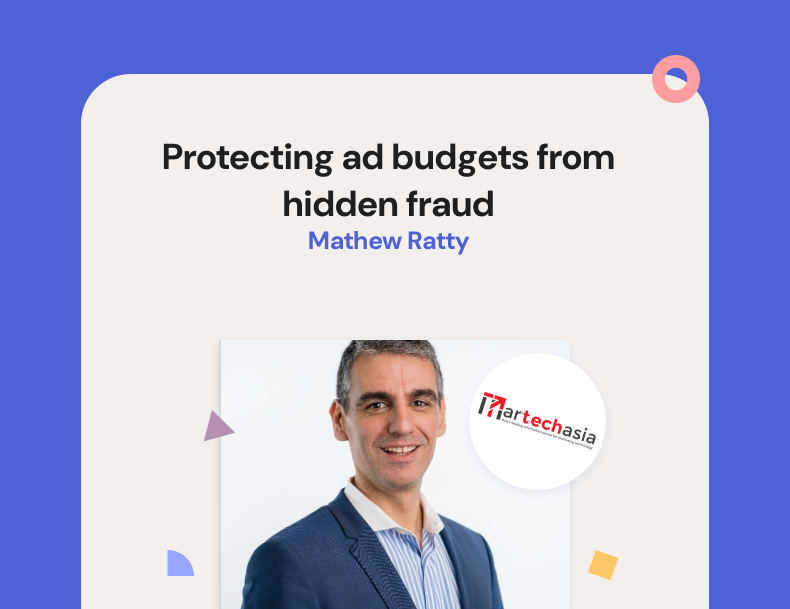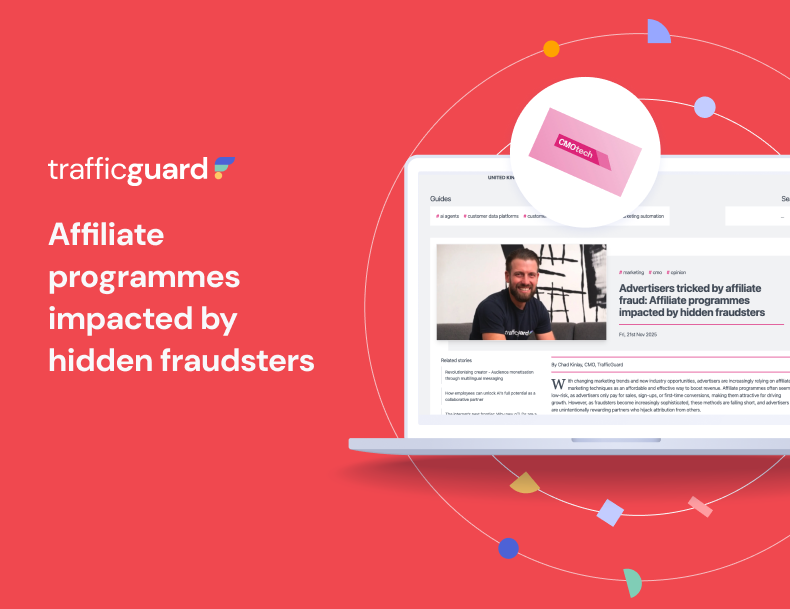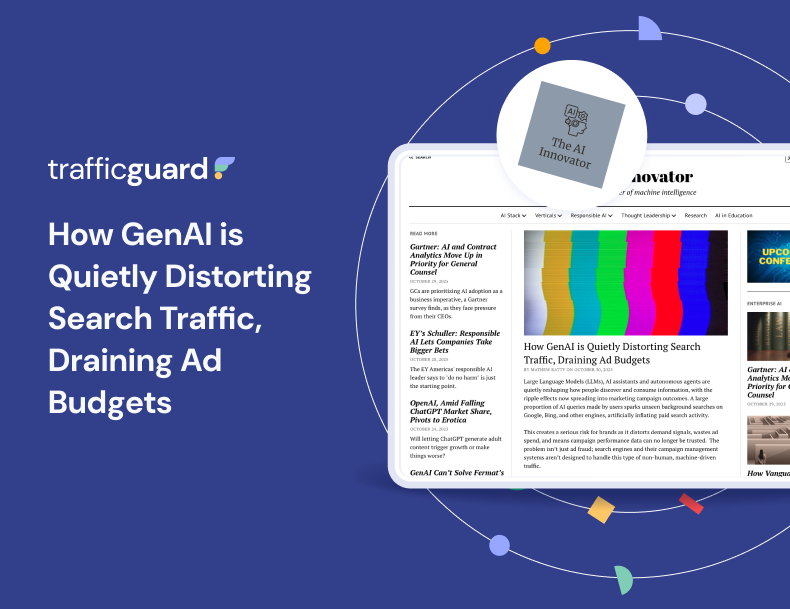AI, transparency, and the rising threat of ad fraud in Google’s Performance Max

It's important to note that it’s not just invalid traffic that’s costing brands -- AI also has the potential to optimise suboptimal outcomes.
When Google rolled out Performance Max (PMax) in 2022, it seemed like the answer to every marketer’s dream. Using machine learning, PMax sought to help businesses drive marketing efficiency, performance and better ROI by automating campaign optimisation across all of Google’s channels, including YouTube, Search, Shopping and Discovery.
For brands in APAC, PMax’s ability to automatically tailor ads to reach the right audience offered an opportunity to reach wider, diverse audiences and improve their ROI. It helped Malaysia-based education company MindValley, for example, to automatically create campaigns across channels and optimise them for performance. This saved the brand time and effort that would have otherwise been spent having to implement solutions for each, eventually reducing its cost per conversion by 25 per cent.
At the core of the PMax promise is Google’s AI, making decisions on everything from bidding to creative to search query matching and media environments. However, like all AI and machine learning-driven advertising platforms, whether originating from Google, the Trade Desk, Yahoo, or numerous others, PMax necessitates marketers to place their trust in an enigmatic algorithmic ‘black box’.
For brands looking to maximise returns from this new campaign type, this ambiguity calls for a dose of prudent scepticism — as well as a preventative action to safeguard their marketing budgets against rising ad fraud.
The problem with PMax
The problem with all black box systems is marketers are at the mercy of the algorithm. In the case of PMax, where Google manages everything, it requires an even higher level of faith in the system. Adding to this, limited granular reporting in PMax means that while you get broad campaign insights, you won’t be able to see if it’s display, search, video, or shopping ads driving your clicks and conversions.
This would be great if the world was perfect or you only spent money on Google channels — but marketing is complex, with multiple media partners in any one campaign. And as every marketer is aware, transparency and accountability are indispensable to operate with utmost effectiveness. Any industry opacity carries the potential to be exploited to the detriment of marketing budgets and reach — and one of the biggest such threats is that of invalid traffic (IVT) — a rampant problem in the region and globally that is causing businesses billions in lost revenue.
It should come as no surprise that fraudsters and bad actors are shifting their focus from general programmatic fraud to targeting campaigns like PMax that lack insights. According to our analysis of IVT and ad fraud in the region, as well as PMax campaigns with select clients over the past several months, here’s what marketers need to know:
- IVT is a bigger problem than you might think: In the realm of traditional programmatic, invalid traffic and click fraud occur on a daily basis, spanning search, mobile, and affiliate campaigns. For context, in search, we have seen between 5-15 per cent of search clicks come from bots seeking to exploit paid search campaigns to sign up or claim incentives within the ads or, worse, deliberately exhausting clients’ search budgets as a “competitive” tactic.
- Not all IVT is malicious: In a parallel context, not all instances of invalid traffic bear malicious intent. For example, we found that 97 per cent of a user’s Google ad budget on brand name campaigns was being consumed by returning users who were just using Google as a front door to click on a paid ad to log in to their account.
- Mobile is particularly susceptible to fraud: In the mobile domain, the figures we’ve observed are even more disconcerting, particularly for app install campaigns within sectors like car sharing and food delivery. Instances of fraudulent app installs have surged to alarming rates, reaching up to 50 per cent and, for one client, the claimed clicks and installs exceeded the population of the targeted geography in a week!
- Affiliate fraud is costing brands and publishers: When addressing affiliate fraud, specifically for high-payout categories such as sports and sports fantasy betting as well as subscription and entertainment services, we have seen click fraud and affiliate cookie stuffing through malevolent browser extensions siphon away US$100,000 of affiliate payouts per month – harming marketers and publishers.
What we have observed on PMax is a mix of both new fraud tactics and some of the same types of invalid traffic and fraud that we see across programmatic. Given that PMax, and most AI systems, assume positive user intent, invalid traffic that has occurred in PMax campaigns comes because AI assumes every “user” engagement is positive in intent.
When bad actors exploit this and create fake intent signals, it can end up training the algorithm to optimise towards the source of the invalid traffic. This results in wrongly optimised campaigns that divert and deplete advertising budgets by driving more fake engagement and conversion events.
It’s also important to note that it’s not just invalid traffic that’s costing brands — AI also has the potential to optimise suboptimal outcomes. For example, one of our clients saw PMax bidding on low-performing search terms, which resulted in the rapid burning of daily budgets on terms any experienced search marketer would normally exclude.
How brands can safeguard against IVT
To be fair, these gaps are not malfeasance by Google or PMax; however, when AI is optimising towards invalid traffic, budgets can be inefficiently allocated when there is opacity and no real-time 3rd party oversight and intervention.
PMax is simply a microcosm of what happens across the entire internet – the challenge lies in marketers who employ AI buying systems without independent third-party auditing and analysis. They face the possibility of unknowingly running the risk that they will just be pumping money into a high-speed AI-optimised invalid traffic machine.
I believe that the industry, as a whole, should have a sense of optimism regarding the potential of what AI can bring to the table in terms of driving better marketing performance. There is value to be realised in automation and operational efficiencies to be gained.
But, whether it’s PMax or any other AI-led solutions, marketers must push for algorithmic transparency, invest in independent oversight, and not blindly trust the little black box of algorithms if they truly want to drive the best fraud-free performance.
Otherwise, bad actors, whether they target PMax or any other AI-led advertising solution, will exploit your trust for their benefit, draining your marketing budgets in the process.
Read more 👉 here.
Get started - it's free
You can set up a TrafficGuard account in minutes, so we’ll be protecting your campaigns before you can say ‘sky-high ROI’.
At TrafficGuard, we’re committed to providing full visibility, real-time protection, and control over every click before it costs you. Our team of experts leads the way in ad fraud prevention, offering in-depth insights and innovative solutions to ensure your advertising spend delivers genuine value. We’re dedicated to helping you optimise ad performance, safeguard your ROI, and navigate the complexities of the digital advertising landscape.
Subscribe
Subscribe now to get all the latest news and insights on digital advertising, machine learning and ad fraud.







